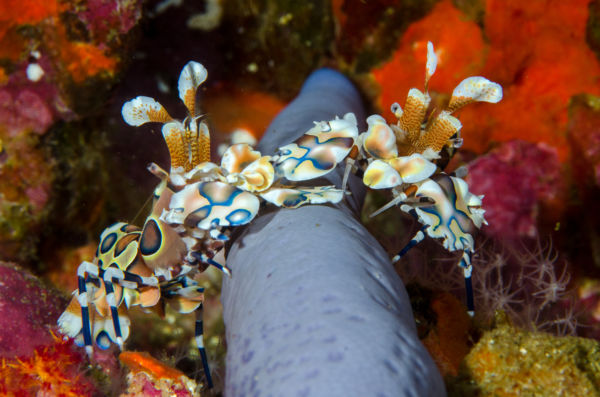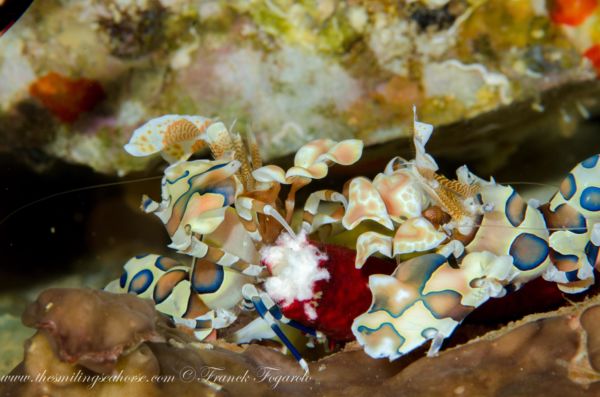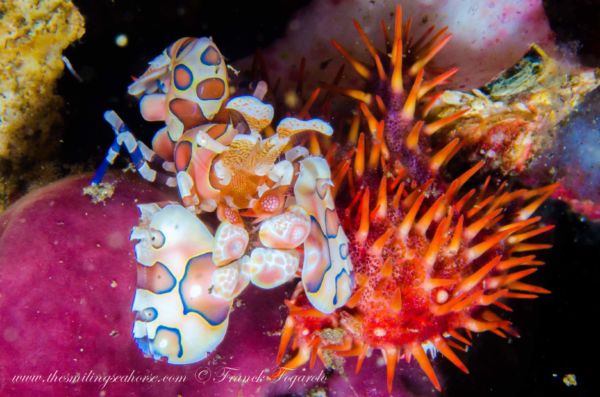Small but stunning harlequin shrimp are fascinating animals that nearly every diver would love to see underwater. Here are all the nitty-gritty details on harlequin shrimp— and on their creepy feeding habits.
Daily life of a harlequin shrimp
It’s well-known that harlequin shrimp prefer to live in pairs. If they remain undisturbed, they can live that way for their entire 7-year lifespan as a paired male and female. The female grows to be just about 2 inches (5 cm) long and her male counterpart is even smaller.
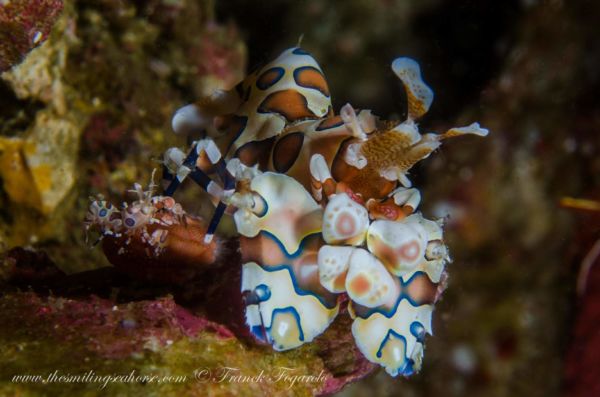
The harlequin shrimp’s sole food source is starfish, including the menacing crown-of-thorns species. But, as much as we would love harlequin shrimp to solely take care of this ocean plague, there simply aren’t enough of them to eliminate this invasive starfish. We must hand it to these tiny powerhouses, however, as they do play an important role in controlling numbers of these pests.
Sadly, as they are extremely unique and beautiful, humans represent a major threat to these shrimp. Aquarium enthusiasts see them as significant assets and love to put them on display, which makes their already small population dwindle. Although they are undoubtedly lovely to look at, they belong in their natural habitat rather than captivity.
Types of harlequin shrimp
There are two variations of harlequin shrimp, native to the Indo-Pacific and Central and Eastern Pacific Oceans respectively. They are Hymenocera Elegans — the ones we see when diving in Myanmar with orange spots surrounded by blue — and Hymenocera Picta, also called the Hawaiian harlequin shrimp, with pink-purple spots surrounded by yellow. Scientists once thought they wer two independent species, but now know they are the same with the only their color differing. As tropical reef dwellers, they prefer to live in waters ranging from 71 to 77 F (22 to 25 C).
Divers can regularly see harlequin shrimp in the spectacular reefs of the Mergui Archipelago in Myanmar. This region is a macro-lover’s paradise and the harlequin shrimp is only one of the jewels that dwells there.
How to identify harlequin shrimp
Like many shrimp, their eyes are fixed on stalks. They use two enormous, flat claws a bit like scissors while hunting for and harvesting their prey. The most notable feature of harlequin shrimp, though, is obviously their magnificent coloring. They range from white to light pink with touches of red, orange, blue, or purple. Their vibrant colors and unique shape make them highly sought-after subjects for underwater photographers.
The body pattern does more for the shrimp than simple vanity, however — it’s an evolutionary adaptation that helps protect them from predators. Traditionally in the world of marine creatures, a bright color means ‘danger,’ and the harlequin shrimp is no exception. Their vibrant patches help warn predators to stay away and the shrimp can also camouflage very quickly to appear as corals or sea plants. They gladly accept the help of shadows cast by the overhead sun to perfect their deception. This simple advantage allows them to attract fewer predators than a creature of this size should.
Harlequin shrimp prefer to live near branched corals and rocky corners to create hidden safe havens. While the reef offers a comfortable, protected habitat, harlequin shrimp do their part to return the valuable favor. Their diet creates a symbiotic relationship wherein they protect the corals by gobbling up parasites like the Asterina starfish before they can inflict lasting damage.
Feeding and hunting methods
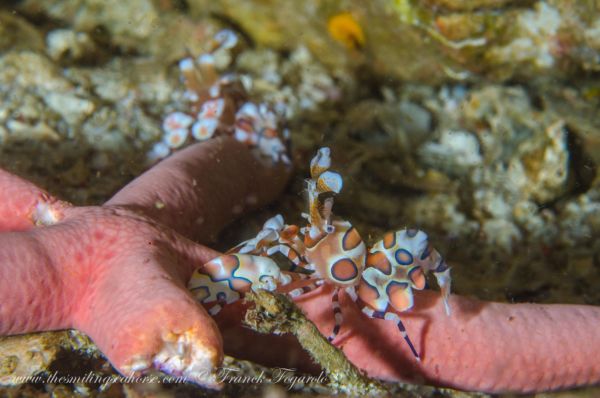
Harlequin shrimp are notoriously picky eaters as they prefer starfish alone. Even though some have been seen munching on sea urchins, it is clear that those are not their first choice, and they will even turn their nose up at brittle stars. They hunt as a matter of responsibility, with each shrimp in a pair having a specific task.
One shrimp first detects the scent of the starfish using its antennae. Once it has detected a delicious morsel, the pair proceeds to catch up with their prey. Using its pincers, one shrimp will snip off the soft, tube-like foot attachment of the starfish, and the other will pull the starfish until it’s turned on its back.
Now, here comes the gruesome part: the shrimp eat the starfish’s soft tissues and tube feet slowly. The starfish goes through a slow, painful death for weeks — or even months — as it is eaten alive. Over time, the starfish regenerates the eaten parts, providing even more food. Some harlequin shrimp will even feed their prey to extend their life. Therefore, a captured starfish can sustain an entire harlequin shrimp family for a long time.
Mating, reproduction and species safety
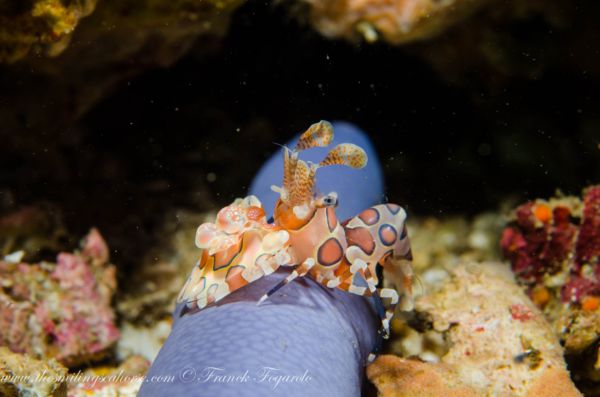
If a pair of harlequin shrimp mates find a comfortable place to live, they will stay for months or even their entire lives. As mentioned, a mating pair will stay together for life and share tasks equally to fiercely protect their family.
Mating occurs after the female molts. In one breeding season, a female can produce between 100 to 5,000 eggs. And although this number seems high, harlequin shrimp are still endangered as their tiny babies are very vulnerable and human interference further aggravates this.
Apart from humans directly harvesting them for the aquarium trade, harlequin shrimp are also in grave danger of losing habitat due to human activities that damage coral reefs. In aquariums, harlequin shrimp do care about humans and are likely oblivious to the fact that they’re on display. But in the wild where they truly belong, they are skillful hunters with one thing in mind: to find starfish.


